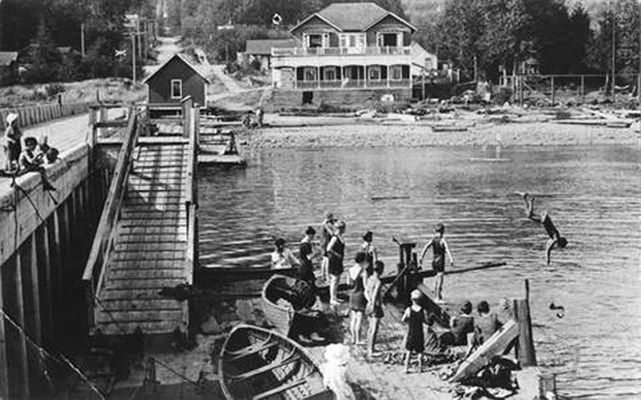WEST Vancouver's photographic history went digital this month.
Approximately 5,000 historical photos depicting more than 70 years of the district's evolution are in the process of being converted to a digital format and posted online, thanks to the West Vancouver Memorial Library.
"They really look good online," said systems librarian Maryann Kempthorne. "This kind of retrospective conversion can really (save) information that otherwise would be lost."
Approximately 1,500 photos are currently online. The remainder of the collection is slated to hit the Internet this fall, according to Kempthorne.
For assistant librarian Jane Jardine, who has been filing books in the library since 1997, the changes have been sweeping.
"When I started the job I was just passed a bunch of binders that had photocopies of our 4,000-plus photos, and three boxes of subject cards and the photos were kept in archival envelopes in a filing cabinet," she said.
After library patrons flipped through each page in the eight binders or thumbed through the subject cards, Jardine would take the picture in question to a photography store to have a copy made.
"It's changed quite a bit," she said. "The photos are a great way to spark an interest in the history of West Vancouver and. . . it's so easy to find now."
Many of the early shots, which date back to the last days of the First World War, were captured by photographer Leonard Frank, who snapped many striking images of British Columbia after arriving in Canada in 1892.
Other photos include a shot of original Hollyburn resident John Lawson handling a horse and sporting a mustache worthy of a pioneer. The collection also boasts a nearly exhaustive exploration of Marine Drive that Kempthorne likened to an early version Google Street View.
However, far from being frozen moments of history, Jardine and Kempthorne both attest to the collection being a constantly expanding story.
"We're putting information out there, but then people can give us feedback. Because it's local information, it's really interesting how much people in the community know about our collection that we want to add to the database," Kempthorne said. "I had a member of the public contact us about one of our Second Narrows Bridge collapse photos saying that he was on the boat when that photo was taken. It means we have to do some research: 'Who's boat was it really?' and how do we add that information to the conversation. . . These are things that museums have dealt with for a long time and it's something new for us in libraries."
A sharp-eyed car enthusiast also alerted Jardine to a mislabeled photo.
"I just got an email from a licence plate collector who commented that a certain photo must've been 1948 rather than 1946," she said.
Bringing those photos to the web required sophisticated software, according to Kempthorne.
"It's an international platform for delivering digital content and archival content through new open-source software," she said.
Still, there's also a great interest in the technology that produced the photos, according to Kempthorne.
"People are really attracted toward the technology of what media used to be," she says.
More information is available at digital.westvanlibrary.ca.



